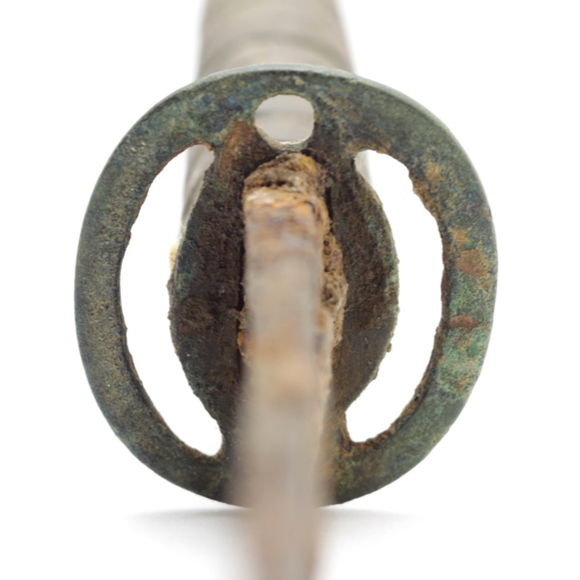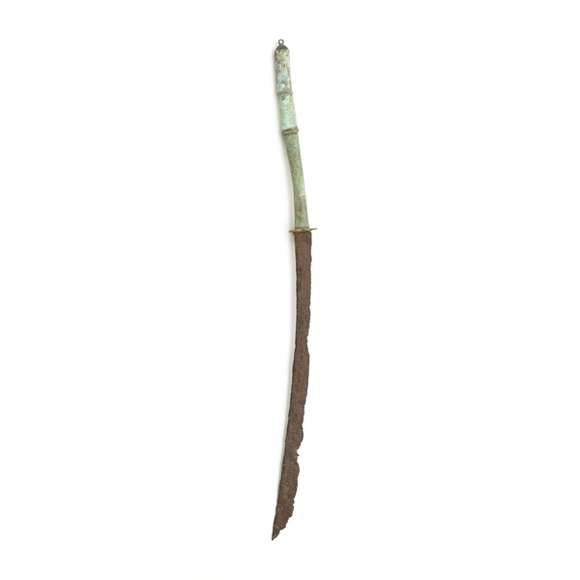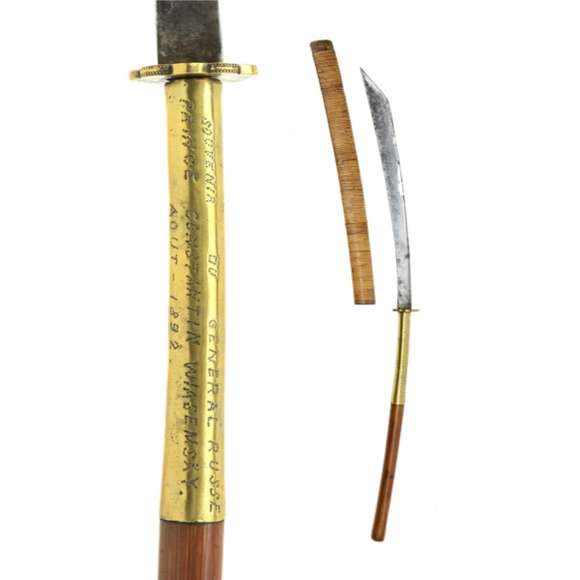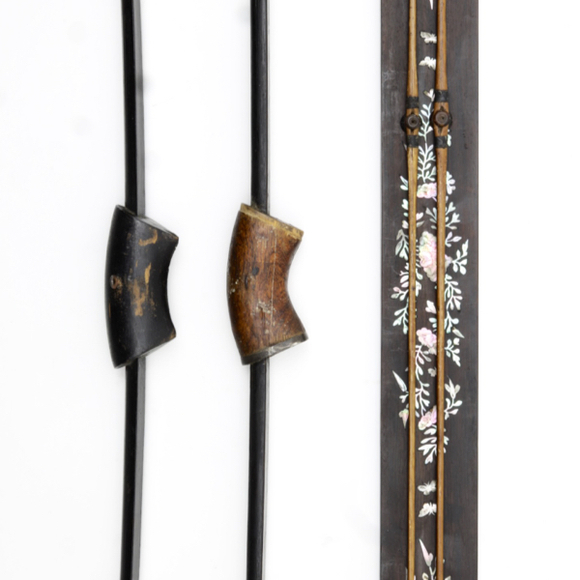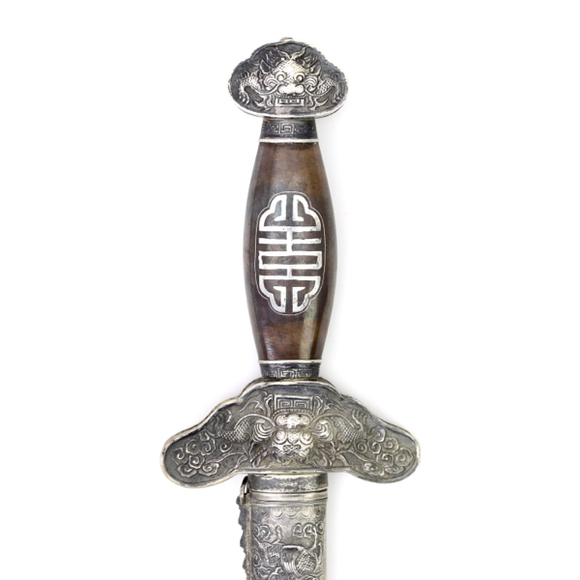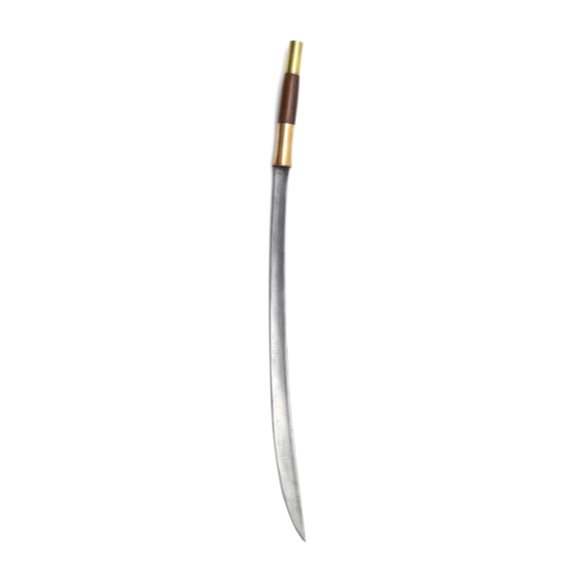Language: Khmer
Source: Old dictionary
Description
Saṃrit;(សំរិត) is a Khmer word that is used in Thailand and Cambodia to describe a peculiar copper alloy that does not tarnish and is believed to bring good luck. It is also written សំរឹទ្ឋ or សំរឹទ្ធ. It literally means "to filter, to strain" "refined" or "purified". 1


Samrit alloy sword hilts on a pair of Thai swords.
Mandarin Mansion inventory 2021.
Composition
One source, supposedly quoted from a document in the collection of the king of Siam, notes the production of the alloy:
"Take 12 parts by weight of pure tin, melt it at a slow fire, and avoid bringing it to a red heat. Poor in two parts of quicksilver, stir until the latter has become thoroughly absorbed and amalgamated, and case the mixture into a bar. Take 80 parts of refined copper and melt it, and then gradually incorporate with it the amalgam, stirring vigorously in the meantime. Now throw into the crucible a sufficient quantity of ashes obtained from the stems of the "bua-bok" (lotus) creeper, so as to cover the molten metal. Remove the dross with an iron ladle, and the metal remaining is samrit bronze." 2
In percentages, that is about:
85.11% copper
12.76% tin
2.13% mercury
Some sources also mention the presence of gold, and substantial amounts of gold, as well as silver, are indeed found in Khmer bronze artifacts. 3
Notes
1. Robert K. Headley, Rath Chim, and Ok Soeum; Cambodian-English Dictionary. Dunwoody Press, 1997. See entry here. Also see: sealang.net.
2. Popular Mechanics Magazine, August 1911. Page 208.
3. David Bourgarit, Benoit Mille, Thierry Borel, Pierre Baptiste and Thierry Zéphir; A Millennium of Khmer Bronze Metallurgy : A Technical Study of Seventy-five Bronze Artefacts from the Musee Guimet and the Phnom Penh National Museum. Published in Scientific Research in the field of Asian art, Proc. 1st Forbes Symposium, Freer Gallery, Washington. Pages 103-126.

